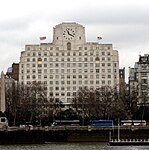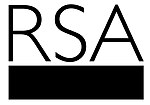Cheylesmore Memorial

The Cheylesmore Memorial is a Grade II listed outdoor stone memorial dedicated to British Army officer Herbert Eaton, 3rd Baron Cheylesmore, located in the Victoria Embankment Gardens in Westminster, London, England. The memorial was designed by Edwin Lutyens and unveiled in 1930.At the dedication ceremony on 17 July 1930, the memorial was unveiled by Prince Arthur, Duke of Connaught and Strathearn, the third son of Queen Victoria. Those attending included John Jellicoe, 1st Earl Jellicoe and Paul Methuen, 3rd Baron Methuen.The memorial is made of Portland stone and has seats backing on to a decorative screen facing a small pond. An inscription at the centre of the screen reads: Major-General Lord Cheylesmore, GBE, KCMG, KCMO, Grenadier Guards. Born 1848. Died 1925. Soldier, administrator, philanthropist and steadfast friend.
Excerpt from the Wikipedia article Cheylesmore Memorial (License: CC BY-SA 3.0, Authors, Images).Cheylesmore Memorial
Victoria Embankment, City of Westminster Covent Garden
Geographical coordinates (GPS) Address External links Nearby Places Show on map
Geographical coordinates (GPS)
| Latitude | Longitude |
|---|---|
| N 51.5088 ° | E -0.1209 ° |
Address
Cheylesmore Memorial
Victoria Embankment
WC2N 6PA City of Westminster, Covent Garden
England, United Kingdom
Open on Google Maps










